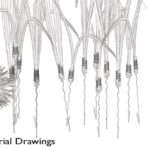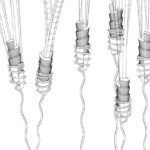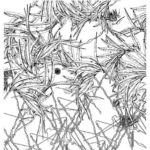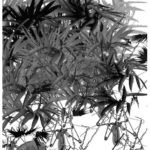Palatine Burial Drawings
Rome, IT - 1995
Palatine Burial is a fabric ‘soil’, a spreading geotextile reinforcing the soil and fostering new growth. Palatine Burial responded to a recent excavation in Rome in which traces were found of a baby that was sacrificed and buried beneath the ancient fortifications of the city. The project involved construction of a textile cover used for reburial of the archeological site.
The sacrifice was for propitiation, protecting the boundary of the city. Making sacred. A mundus, a little world offered in stead of the world around. Beneath the wall at the edge of the city, a pit was dug into the volcanic mud-stone tufa, fitted to the clay dolium vessel enclosing the tiny body. Sifted linings filled in the spaces closing the void between the vessel and the stone. Tiny fragments of the burial remained: a brooch; a tooth. Laid bare. What material could be adequate for covering there?
Each link of the fabric net received special details. Inside was an anatomy of transparent vessels cushioned by sprung tenons and terminated by serrated hollow needles to puncture and drain. Toward the outside, angled crampons bent back for springing and grasping set up with hair-trigger antennae. Around, a spread of open joints with outflung guides to catch and link with neighbours.
Each of these protozoan links was thin and meager, but by linking and clumping together they made mass and thickness. At first a bare latticework controlled by the geometry of its elements then increasingly formless and growing darker as it ingested decomposing matter. Thicker, and fertile, enveloping the wire implants and making a complete turf. This cover was finally dense, redolent with growth. And within that vital new earth, a convulsion glimmered-a poise telegraphing through from the sprung armature deep within.




